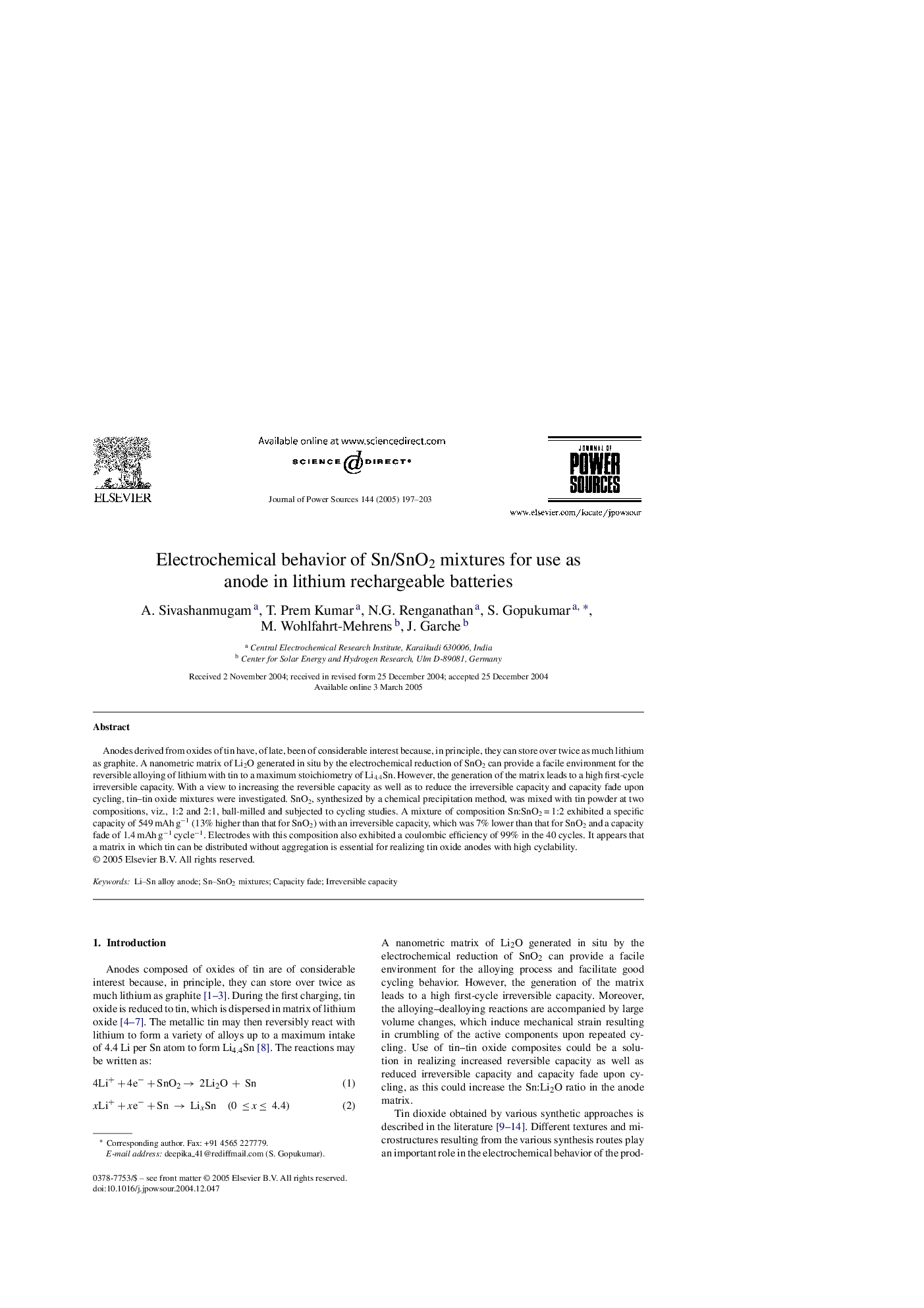| Article ID | Journal | Published Year | Pages | File Type |
|---|---|---|---|---|
| 10567380 | Journal of Power Sources | 2005 | 7 Pages |
Abstract
Anodes derived from oxides of tin have, of late, been of considerable interest because, in principle, they can store over twice as much lithium as graphite. A nanometric matrix of Li2O generated in situ by the electrochemical reduction of SnO2 can provide a facile environment for the reversible alloying of lithium with tin to a maximum stoichiometry of Li4.4Sn. However, the generation of the matrix leads to a high first-cycle irreversible capacity. With a view to increasing the reversible capacity as well as to reduce the irreversible capacity and capacity fade upon cycling, tin-tin oxide mixtures were investigated. SnO2, synthesized by a chemical precipitation method, was mixed with tin powder at two compositions, viz., 1:2 and 2:1, ball-milled and subjected to cycling studies. A mixture of composition Sn:SnO2 = 1:2 exhibited a specific capacity of 549 mAh gâ1 (13% higher than that for SnO2) with an irreversible capacity, which was 7% lower than that for SnO2 and a capacity fade of 1.4 mAh gâ1 cycleâ1. Electrodes with this composition also exhibited a coulombic efficiency of 99% in the 40 cycles. It appears that a matrix in which tin can be distributed without aggregation is essential for realizing tin oxide anodes with high cyclability.
Keywords
Related Topics
Physical Sciences and Engineering
Chemistry
Electrochemistry
Authors
A. Sivashanmugam, T. Prem Kumar, N.G. Renganathan, S. Gopukumar, M. Wohlfahrt-Mehrens, J. Garche,
